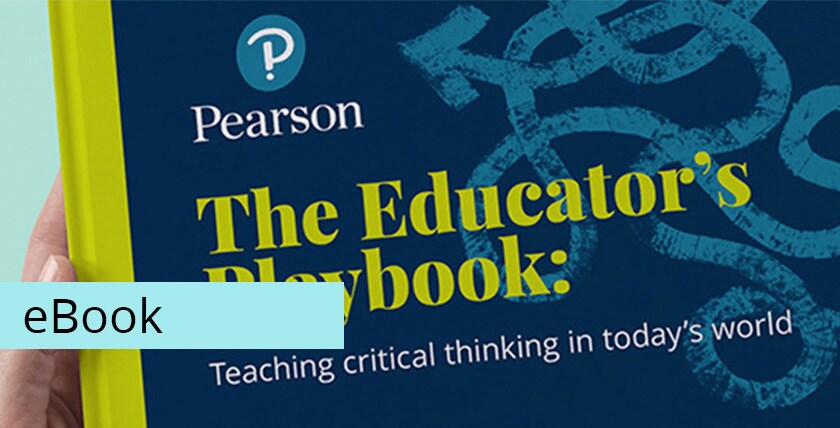A guide to deliver blended learning

A visual guide outlining how to activate a blended learning model, its benefits in the modern classroom, plus more.
View the infographic below:
A visual guide outlining how to activate a blended learning model, its benefits in the modern classroom, plus more.
View the infographic below:
With globalisation, automation and advancements in technology, future skills have never been more important.
We gained exclusive access to Pearson’s Jason Gregory (International Director, UK BTEC & Apprenticeships) to gather his insights on the importance of future skills and the crucial role educators play in preparing learners for future workforce demands.
So, what’s inside the eBook?
Beat your competitors to it — download your free copy today.
Those who have English language skills reap the rewards in their personal and professional lives.
Having English language skills not only increases employability and earning potential, but it also hones key soft skills, too.
We unpack the benefits in the infographic below.
read more
Critical thinking is one of the most sought-after skills in the modern era – many thought leaders argue that it is number one on the list in terms of future skills. Educators must play a leading role in teaching critical thinking skills to today’s learners as part of their curriculum and wider teaching methods.
In this asset, you will find exclusive, actionable insights from critical thinking experts who have conducted years of research on the topic.
So, what’s inside the eBook?
Beat your competitors to it – get your free copy today.
read more
In the times before technology, traditional teaching methods were heavily reliant on print-based material, as classwork was done from a student book and in turn homework was completed in a workbook.
It's a proven approach, and fundamentally the anatomy of the classroom hasn’t changed all that much. What’s different now, however, is the prevalence of technology and its place in the world of education. As technology advances around us, so does the way we teach and learn.
Cassette tapes were leveraged as an education tool in the 1970s and 80s, and we then transitioned to the computing advancements of the 1990s, which made way for more sophisticated use of laptops in the classroom setting.
As such, we saw the possibilities of online teaching methods emerge as a new teaching approach that could complement face-to-face learning.
While the technology at the time was limited, it signified a landmark moment in teaching. Educators realised that teaching and learning can be done outside of the classroom and holds vast benefits for learners.
In the context of English language teaching, there are a number of variables that are changing the way learning is done, and they are as follows: learner appetite for on-demand access to information is as high as ever; competition for attention is fierce; and of course, the evolution of technology is as rapid as ever.
Ultimately, the way we learn is not linear and everyone has their own learning journey, so the challenge for teachers crafting their approach for modern English language learners remains – what is the best approach?
Enter online learning and blending learning. Brick and click, tailored learning, digital learning, and so on. We often hear of these terms, but it’s not always clear on how this looks, feels, and functions in practice.
What is online learning? This approach is essentially a learning environment that exists online. Learners can practice at their own rate, do their homework in their own time, and self-direct their learning.
Kayo Taguchi is Pearson Asia's English language teaching (ELT) portfolio manager, and she says that the most beneficial aspect to the online teaching approach is the higher volume of data to tap in to, and so that means being able to track progress, analyse the numbers behind learner patterns, and in turn apply learnings.
“Teachers are creating online classroom environments, where they're doing interactive activities such as: polling, breakout rooms and other team-based activities all online. What this is presenting is an opportunity for students to transition to do their homework outside of the classroom, and even go that step further to do additional study in their own time because the online environment makes it possible.”
While the online learning approach allows students to get creative with their approach to doing homework and extracurricular study, there are challenges associated with the online-only approach.
For Kayo, this approach is reliant on access to technology, a sound internet connection, and disciplined learners.
“There's the technology side of things when we’re learning and teaching online, for example, when people are accidentally on mute, or if learners don’t have computers, or their internet isn’t holding up, or they're looking at other things on their phone – that kind of general challenge is present.”
And for teachers, there’s the administrative considerations of getting the classroom online and some level of platform upskilling to understand how to get the most out of the online classroom environment.
Kayo says that with a little bit of training and a clear plan in place, the online teaching approach can be very effective.
“For example, if learners have missed a class then teachers can provide a recording of the online experience or a PDF that provides an overview of the lesson. And during unprecedented times like we have experienced with COVID-19, you can access courses from anywhere, and you don’t need the physical classroom.”
As the name suggests, blended learning is a mix between two methods that is as follows: traditional, face-to-face learning and online learning. If we visualise it in the context of a Venn diagram, it looks like this:



